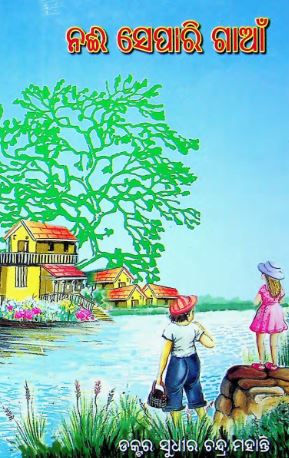Nai Separi Gaon published in 2004 by the renowned Odia author Sudhir Chandra Mahanty, is a captivating collection of short stories that captures the rich tapestry of life in a fictional village. Mahanty, known for his vivid storytelling and keen observation, delves into the intricacies of human relationships and the socio-cultural environment of Odisha through this engaging compilation.
The title Nai Separi Gaon, which translates to “The Village of Barbers,” serves as a focal point around which the narratives revolve. In many ways, the village symbolizes the heart of rural Odisha, where traditions, customs, and the essence of communal life thrive harmoniously. The stories encapsulate the essence of a close-knit community, where every individual plays a vital role in shaping the village’s identity.
The collection comprises several sub-stories, each uniquely infused with themes of love, sacrifice, social issues, and the everyday struggles of ordinary people. Mahanty’s ability to intertwine these elements with local dialect, cultural references, and humor endows each story with authenticity and emotional depth. He deftly crafts memorable characters that are both relatable and complex, bringing to life the hopes, dreams, and frustrations of the common folk.
One of the standout stories in the compilation follows the life of a barber in Nai Separi Gaon who navigates the challenges of his profession while acting as an informal counselor to the villagers. The barber, with his chair positioned at the heart of the village, becomes a silent witness to the joys and sorrows of local life, symbolizing how mundane spaces can often become hubs of pivotal experiences. Through his interactions, readers are drawn into the fabric of village life, exploring themes of friendship, gossip, social expectations, and the generational dynamics that shape communities.
Another tale in the collection addresses the plight of women in rural society, highlighting their resilience amidst patriarchal challenges. Here, Mahanty delves into issues of empowerment, tradition, and societal change, offering readers a glimpse into the transformative journeys of his female characters. The portrayal of women, often marginalized in such settings, is handled with sensitivity and respect, showcasing their strength and agency.
The author’s adeptness at using humor and irony adds layers to the narratives, allowing readers to perceive the lighter dimensions of life amidst serious themes. By blending laughter with poignant moments, Mahanty creates an engaging reading experience that resonates on multiple levels, making “Nai Separi Gaon” not just a collection of stories but a commentary on the evolving nature of rural identity in contemporary Odisha.
In addition to the rich storytelling, “Nai Separi Gaon” is adorned with vivid descriptions that transport readers to the heart of the village. Mahanty’s lyrical prose paints picturesque landscapes, vibrant festivals, and the intricacies of local customs, creating an immersive experience that engages the senses.
Overall, Nai Separi Gaon stands out as a significant contribution to Odia literature. Sudhir Chandra Mahanty captures the essence of village life with empathy, humor, and authenticity, making this compilation a must-read for anyone interested in understanding the cultural richness and social complexities of Odisha. Through his storytelling prowess, Mahanty encourages readers to reflect on their own lives and the interconnectedness of their stories with those they encounter, emphasizing the beauty in shared human experiences.
Books Info
| Books name | Nai Separi Gaon |
| Author | Hrusikes Panda |
| No Of pages | 73 |
| Publisher | Arjya Prakashana |
| Publication | 1997 |
| Printed At | Sree Jagannatha Laminator |
| Distributor | NA |

